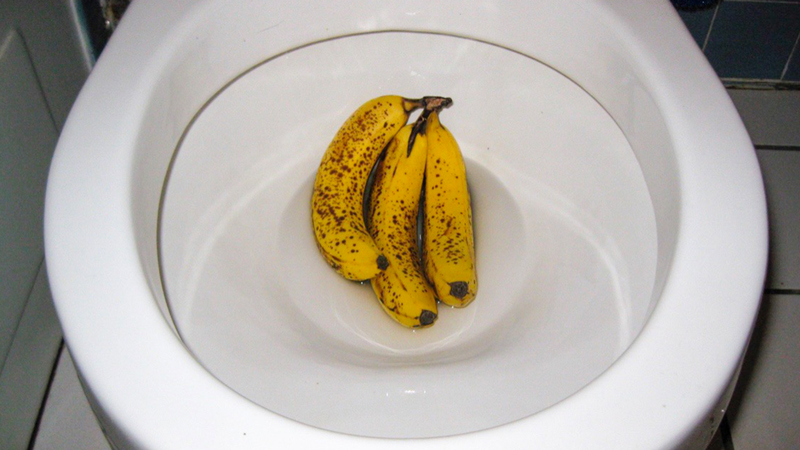Is it Permitted to Dispose of Food in the Toilet?
Is it Permitted to Dispose of Food in the Toilet?
Blog Article
What're your opinions with regards to Think Twice Before Flushing Food Down Your Toilet?

Intro
Many individuals are usually confronted with the predicament of what to do with food waste, particularly when it concerns leftovers or scraps. One usual question that occurs is whether it's all right to purge food down the toilet. In this post, we'll delve into the reasons that people may think about purging food, the effects of doing so, and alternate techniques for proper disposal.
Reasons people might take into consideration purging food
Absence of awareness
Some individuals may not recognize the prospective harm brought on by flushing food down the commode. They may incorrectly think that it's a harmless technique.
Benefit
Purging food down the toilet may feel like a quick and simple option to disposing of unwanted scraps, especially when there's no nearby trash can readily available.
Laziness
Sometimes, people may just select to flush food out of sheer negligence, without taking into consideration the consequences of their actions.
Repercussions of flushing food down the commode
Ecological influence
Food waste that winds up in waterways can contribute to contamination and injury aquatic ecological communities. In addition, the water utilized to flush food can stress water resources.
Plumbing concerns
Flushing food can bring about clogged up pipelines and drains, causing pricey pipes repair work and aggravations.
Types of food that must not be flushed
Coarse foods
Foods with fibrous structures such as celery or corn husks can get entangled in pipelines and create blockages.
Starchy foods
Starchy foods like pasta and rice can take in water and swell, leading to clogs in pipelines.
Oils and fats
Greasy foods like bacon or cooking oils ought to never be purged down the bathroom as they can strengthen and create obstructions.
Proper disposal approaches for food waste
Utilizing a garbage disposal
For homes geared up with waste disposal unit, food scraps can be ground up and flushed through the pipes system. Nevertheless, not all foods are suitable for disposal in this way.
Recycling
Certain food product packaging materials can be reused, decreasing waste and reducing environmental effect.
Composting
Composting is an environment-friendly way to take care of food waste. Organic materials can be composted and utilized to enrich dirt for gardening.
The importance of appropriate waste management
Minimizing ecological injury
Correct waste administration methods, such as composting and recycling, assistance lessen pollution and protect natural resources for future generations.
Shielding pipes systems
By avoiding the technique of flushing food down the commode, homeowners can protect against pricey pipes repair work and maintain the stability of their plumbing systems.
Final thought
Finally, while it may be alluring to flush food down the bathroom for ease, it is essential to understand the prospective consequences of this activity. By adopting appropriate waste administration techniques and getting rid of food waste sensibly, individuals can contribute to healthier pipes systems and a cleaner atmosphere for all.
FLUSH FOOD DOWN THE TOILET?
FLUSHING FOOD CAN CAUSE BLOCKED DRAINS IN YOUR HOME
All of the plumbing fixtures in your home are connected to the same sewer pipe outside of your home. This outdoor sewer pipe is responsible for transporting all the wastewater from your home to the Council sewer mains. Even small pieces of food that go down the kitchen sink can cause problems for your sewer. It should therefore be obvious that flushing larger bits of food, such as meat, risks a clog in either the toilet itself or the sewer pipes. Flushing greasy food is even more problematic because oil coagulates when it cools, coating the interior lining of your pipes.
THE TOILET IS NOT A BIN
Food isn’t the only thing that people shouldn’t be flushing down the toilet. People use the toilet to dispose of all kinds of things such as tampons, makeup wipes, dental floss, kitty litter and even underwear. Water goes to great lengths to educate residents about the high costs and stress placed on wastewater treatment systems simply from people flushing the wrong stuff down the toilet. It costs taxpayers millions of dollars each year, and homeowners thousands in blocked drain repairs.
FLUSHING FOOD IS A WASTE OF WATER
Flushing food is a waste of our most precious resource - water. In June this year Level 1 water restrictions were introduced to protect water supply from drought conditions. Much of New South Wales continues to be affected by prolonged drought with recent figures revealing up to 97 per cent of the state remains in drought. Depending on whether you have a single or dual flush toilet, every single flush uses between five and 11 litres of water. In the current climate this is a huge amount of water to be wasting on flushing food that should be placed in the bin (or better yet, the compost).
https://www.jabplumbingsolutions.com.au/blog/can-you-flush-food-down-the-toilet

We had been shown that article about through someone on a different web property. Are you aware of anybody else who is in to the subject? Do not hesitate to promote it. I value reading our article about .
Book Your Installation Report this page